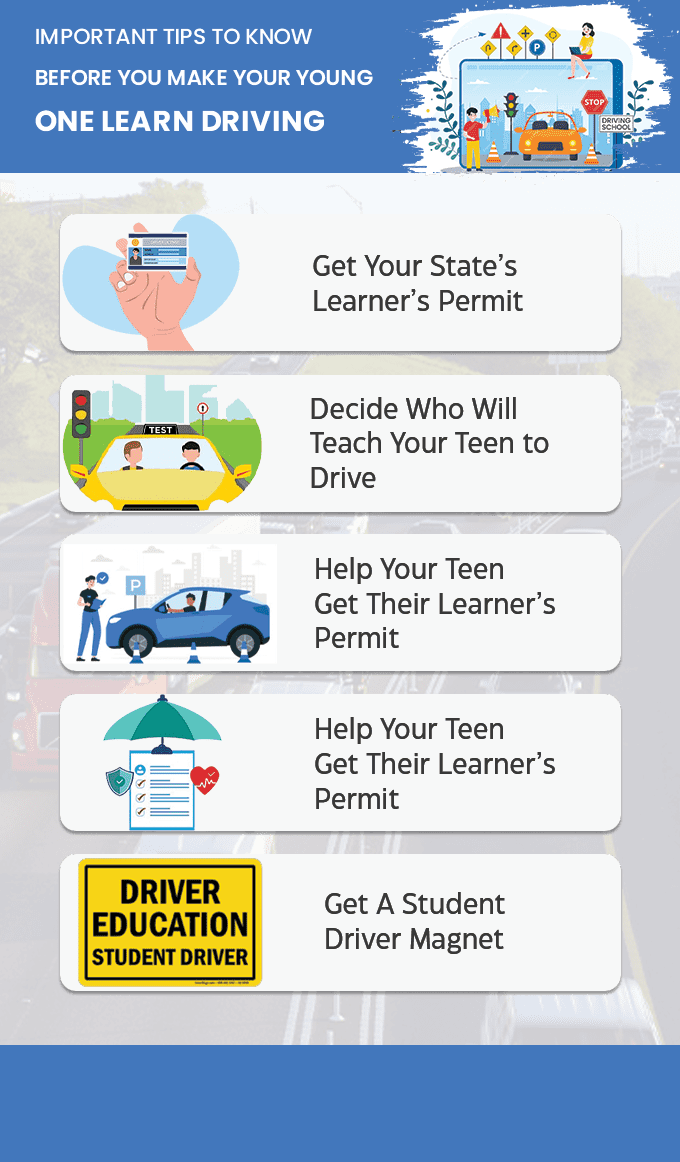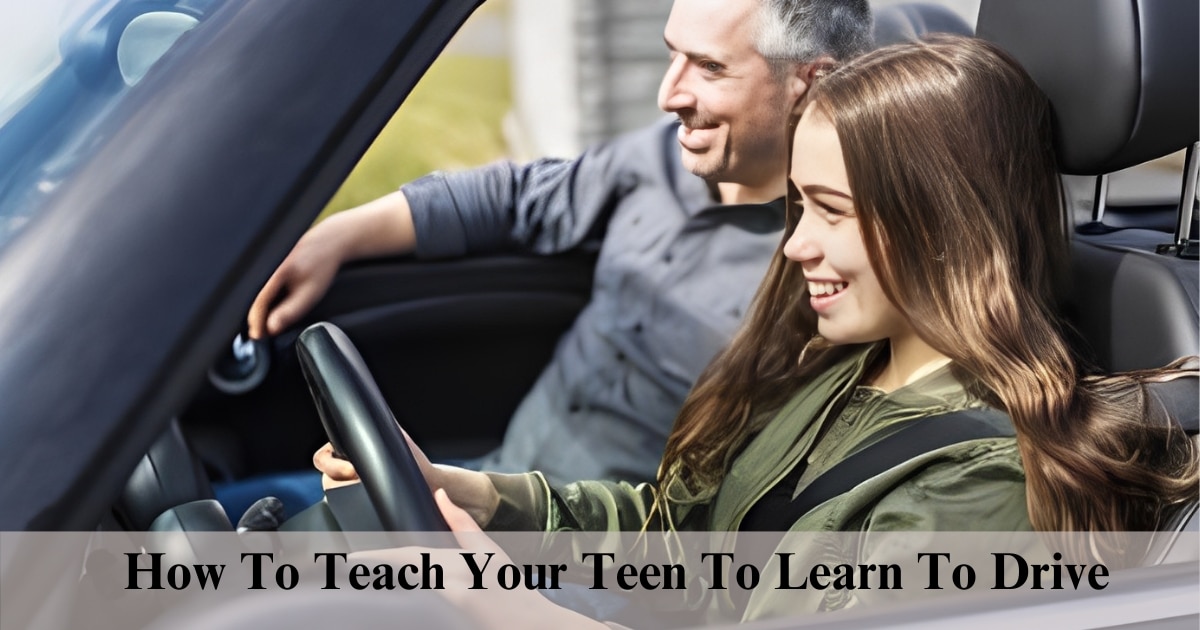Table of Contents
Learn to drive is a significant milestone for teenagers, marking the path to independence and responsibility. To ensure a safe and effective learning experience, follow this guide before and during your teen’s first driving lessons. As a parent or guardian, successfully guiding your teen through this process demands patience, clear communication, and a steadfast dedication to safety. This detailed guide offers step-by-step instructions, empowering you to effectively teach your teen to drive with confidence and responsibility.
What is the right age to start learning driving?
The normal age to learn how to a car can vary depending on the country or region, as regulations differ worldwide. In many places, individuals typically start learning to drive around the age of 16 to 18. However, it is crucial to check the specific laws and requirements in your local jurisdiction, as some places may have a minimum age for obtaining a learner’s permit or driver’s license. Additionally, factors such as parental consent, completion of driver’s education courses, and supervised driving hours may influence the age at which someone can start learning to drive.
Some Important To-Do’s Before Your Teen’s First Time Driving
- Know Your State’s Learner’s Permit: Research and understand your state’s learner’s permit requirements. Familiarize yourself with age restrictions, necessary documents, and any additional regulations.
- Decide Who Will Teach Your Teen to Drive: Choose between yourself, another family member, or a professional instructor. Consider factors like teaching style and availability to determine the best fit for your teen’s learning needs.
- Help Your Teen Get Their Learner’s Permit: Assist your teen through the learner’s permit application process, ensuring they meet all prerequisites and understand the responsibilities that come with driving.
- Check in with Your Insurance Company: Contact your insurance provider to discuss the implications of adding a teen driver. Understand how it may affect premiums and explore available discounts for safe driving courses.
- Get A Student Driver Magnet: Displaying a student driver magnet signals to others that a learning driver is on the road, promoting caution and patience from fellow drivers.

Learn to drive manual car first
If you want to learn how to drive, you must learn to drive a manual transmission vehicle first as it can offer a unique set of benefits for young drivers. Before you learn to drive automatic, driving a manual car necessitates a deeper understanding of a vehicle’s mechanics. This knowledge can be beneficial in troubleshooting issues and conducting basic maintenance, fostering a more informed and responsible approach to car ownership.
Manual driving requires a higher level of coordination between hands and feet. Mastering this coordination contributes to improved overall driving skills, making individuals more attentive, responsive, and in control of their vehicles.
Discuss and Agree Upon Rules of the Road
Establish clear rules to ensure a safe and constructive learning environment:
- Immediate/Urgent Feedback: Communicate how you’ll correct your teen immediately, ensuring urgent feedback for critical situations.
- Constructive (Not Urgent) Feedback: Discuss how you will provide constructive feedback outside of urgent situations, fostering continuous improvement.
- Adherence to Speed Limits: Emphasize the importance of never exceeding posted speed limits, instilling responsible driving habits.
- Full Stops at Stop Signs: Reinforce the necessity of making full stops at stop signs, cultivating safe driving practices.
- No Pushing Through Yellow Lights: Teach your teen to avoid attempting to push through yellow lights, hence reducing the risk of accidents.
- Maintain a Positive Atmosphere: Set expectations for no raised voices or eye-rolling in the car, creating a calm and focused learning environment.
- Music Off During Lessons: Enforce a rule of turning off music to enhance concentration and attentiveness during driving lessons.
Busier Parking Lot Practice
Practice in a busier parking lot to refine essential driving skills
- Maintain a Slow Speed: Practice maintaining a slow and controlled speed, prioritizing precision over speed.
- Use Side and Rear View Mirrors: Train your teen to consistently use side and also rearview mirrors, promoting awareness of their surroundings.
- Make Full Stops at Aisles: Emphasize the importance of making full stops at the end of each parking aisle, reinforcing safe driving habits.
- Always Use Turn Signals: Instill the habit of using turn signals, even when no other vehicles are in view, to encourage responsible signaling.
On-Road Practice
- Start in a Controlled Environment: Begin in a quiet, spacious area to allow your teen to get comfortable with the basics, such as steering, accelerating, and braking.
- Gradual Progression to Traffic: Gradually introduce your teen to busier roads as their confidence and skills grow. Focus on navigating intersections, changing lanes, and understanding traffic flow.
- Parking Lot Practice: Practice in a busier parking lot to refine skills such as maintaining a slow speed, using side and rearview mirrors, making full stops at the end of aisles, and always using turn signals.
- Night Driving and Adverse Conditions: Introduce night driving and adverse weather conditions once your teen is comfortable with daytime driving. Emphasize the importance of adjusting to reduced visibility and adapting to challenging road conditions.
Continuous Evaluation and Improvement:
- Regular Feedback Sessions: Conduct regular feedback sessions to discuss both strengths and areas for improvement. Encourage an open dialogue to address any concerns or questions.
- Advanced Driving Skills: Gradually introduce more advanced driving skills, such as highway driving, parallel parking, and defensive driving techniques.
- Mock Driving Tests: Conduct mock driving tests to help your teen become familiar with the testing process as well as build confidence for the actual driving test.
Final Preparations:
- Review DMV Handbook: Review the DMV handbook together to ensure your teen is well-prepared for the written exam.
- Schedule the Driving Test: Once your teen has completed the required practice hours and demonstrated proficiency in driving skills, schedule the driving test.
- Accompany to the Test: Accompany your teen to the driving test, providing moral support and reassurance.
- Celebrate Success: Celebrate the achievement of obtaining a driver’s license. Reinforce the importance of continued safe and responsible driving habits.
Conclusion
Teaching your teen to learn to drive is a collaborative and rewarding experience. By following these steps, you will equip your teen with essential driving skills. Also you will instill a foundation of responsibility and safety that will guide them throughout their driving journey. Furthermore, remember, patience, effective communication, and positive reinforcement are key elements in this transformative process. By following these guidelines, you’re not just teaching your teen to drive; you’re instilling a foundation of responsible and safe driving habits that will benefit them for a lifetime. Remember, patience, communication, and also consistency are key elements in this transformative journey.


